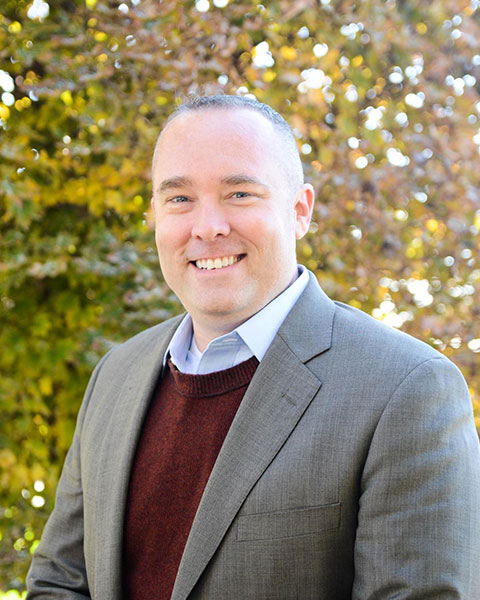Mass Violence/Gun Violence
Symposium 118 - Engaging patients, providers, significant others, community members, and firearm stakeholders in interventions to prevent firearm suicide
Level of Familiarity: All
Recommended Readings: Khazanov GK, Keddem S, Hoskins K, Myhre K, Sullivan S, Mitchell E, Holliman BD, Landes SJ, Simonetti J. Stakeholder perceptions of lethal means safety counseling: A qualitative systematic review. Front Psychiatry. 2022 Oct 20;13:993415. doi: 10.3389/fpsyt.2022.993415. PMID: 36339871; PMCID: PMC9634731., Simonetti JA, Brenner LA. Promoting Firearm Safety as a Suicide Prevention Strategy Within Health Care Systems: Challenges and Recommendations. Psychiatr Serv. 2020 Mar 1;71(3):298-300. doi: 10.1176/appi.ps.201900286. Epub 2019 Nov 14. PMID: 31722648., Betz ME, Rooney LA, Barnard LM, Siry-Bove BJ, Brandspigel S, McCarthy M, Simeon K, Meador L, Rivara FP, Rowhani-Rahbar A, Knoepke CE. Voluntary, temporary, out-of-home firearm storage: A qualitative study of stakeholder views. Suicide Life Threat Behav. 2022 Aug;52(4):655-667. doi: 10.1111/sltb.12850. Epub 2022 Feb 28. PMID: 35224749; PMCID: PMC9378345., ,
-
GK
Gabriela Khazanov, Ph.D.
Research Psychologist
Corporal Michael J Crescenz VA Medical Center
Philadelphia, Pennsylvania, United States -
FA
Frances Aunon, Ph.D. (she/her/hers)
Clinical Research Psychologist
Connecticut VA Healthcare System
West Haven, Connecticut, United States -

Craig Bryan, ABPP, Psy.D. (he/him/his)
Trott Gebhardt Philips Professor
The Ohio State University
Columbus, Ohio, United States -
MA
Michael Anestis, Ph.D. (he/him/his)
New Jersey Gun Violence Research Center
Milltown, New Jersey, United States -
GK
Gabriela Khazanov, Ph.D.
Research Psychologist
Corporal Michael J Crescenz VA Medical Center
Philadelphia, Pennsylvania, United States -
FA
Frances Aunon, Ph.D. (she/her/hers)
Clinical Research Psychologist
Connecticut VA Healthcare System
West Haven, Connecticut, United States -
BD
Bryann Debeer, Ph.D.
Rocky Mountain MIRECC
Aurora, Colorado, United States
Chair(s)
Discussant(s)
Presenter(s)
About a third of Americans report owning firearms, and half of Americans live in a household with firearms. Firearm injury accounts for 52% of suicides in the US, and access to firearms substantially increases risk of suicide. A sharp rise in firearm acquisition starting in 2020 has increased access to firearms, and therefore the risk of firearm suicide, among millions of Americans.
Research and advocacy efforts have highlighted the importance of involving a diverse range of stakeholders in the development and dissemination of interventions to prevent firearm suicide. Stakeholder-engaged research can increase the efficacy, reach, and adoption of interventions, particularly for interventions about sensitive topics like firearms that must address the views and concerns of a variety of stakeholders to be successful.
This symposium brings together researchers and clinicians working to engage patients, providers, administrators, significant others, community members, and firearm stakeholders in interventions to prevent firearm suicide. Presentations describe the development and dissemination of these interventions in diverse clinical and non-clinical settings (e.g., primary care, barbershops) and among a wide range of firearm owners (e.g., US veterans, Black Americans), noting successful strategies and continued challenges to inform future research, implementation, and advocacy.
Presentation 1 discusses efforts to extend interventions beyond the healthcare system into military and community settings. Interventions, delivered by peers, faith leaders, and barbers, and supporting research on firearm-related public health messaging among diverse firearm owners, highlights the importance of leveraging messaging and messengers deemed credible by specific communities.
Presentation 2 describes three ongoing projects to engage US veterans, Black Americans, and both county-level suicide prevention coalitions and firearm experts in New York to develop and disseminate interventions to prevent firearm suicide. Common themes emerging across projects highlight strategies to increase intervention adoption among diverse firearm owners.
Presentation 3 presents work to engage primary care stakeholders, including patients, providers, and administrators, in the development of a brief, primary-care based intervention. Results demonstrate how stakeholder engagement influenced intervention development and implementation within a challenging clinical setting.
Presentation 4 describes a study in which concerned significant others were included in the development and testing of a single-session, upstream intervention. Quantitative and qualitative results suggest sustained change among both US veteran patients and their significant others.
This symposium aligns well with the conference theme, underscoring efforts to inspire community engagement and advocacy to develop and disseminate interventions to prevent firearm suicide. The discussant, a highly experienced researcher and clinician in this area, will comment on common themes and their implications for increasing community investment in these life-saving interventions, as well as their effectiveness and sustainability.
Learning Objectives:
- Explain three reasons why involving stakeholders can benefit firearm suicide prevention research
- Identify three key stakeholders in firearm suicide prevention research
- Identify challenges in engaging stakeholders in firearm suicide prevention research
- Consider how stakeholder involvement might benefit further research in suicide prevention
- Encourage attendees to consider how stakeholder involvement might inform their own work
Presentations:
-
8:30 AM - 10:00 AM EST(SYM 118) Promoting Secure Firearm Storage Through Credible Messaging and Messengers in Community and Military Settings
Speaker: Michael D. Anestis, Ph.D. (he/him/his) – New Jersey Gun Violence Research Center
Co-author: Allison Bond, MA – New Jersey Gun Violence Research Center
-
8:30 AM - 10:00 AM EST(SYM 118) Consulting with Diverse Stakeholders to Engage Firearm Owners in Developing and Disseminating Interventions to Prevent Firearm Suicide
Speaker: Gabriela K. Khazanov, Ph.D. – Corporal Michael J Crescenz VA Medical Center
-
8:30 AM - 10:00 AM EST(SYM 118) Engaging Primary Care Clinicians and Stakeholders to Inform the Development of a Brief, Motivational Interviewing-based Intervention to Promote Secure Firearm Storage
Speaker: Frances Aunon, Ph.D. (she/her/hers) – Connecticut VA Healthcare System
-
8:30 AM - 10:00 AM EST(SYM 118) Involving Concerned Significant Others in Upstream Lethal Means Safety Interventions to Prevent Firearm Suicide in Veterans
Speaker: Bryann Debeer, Ph.D. – Rocky Mountain MIRECC

.png)
